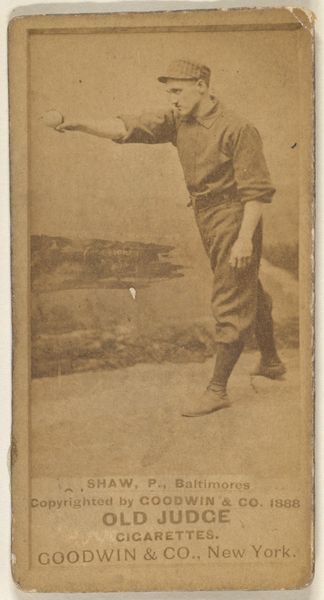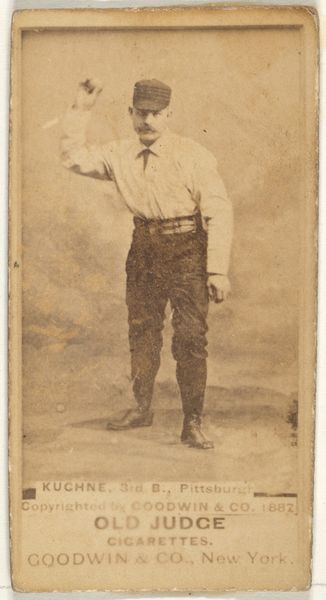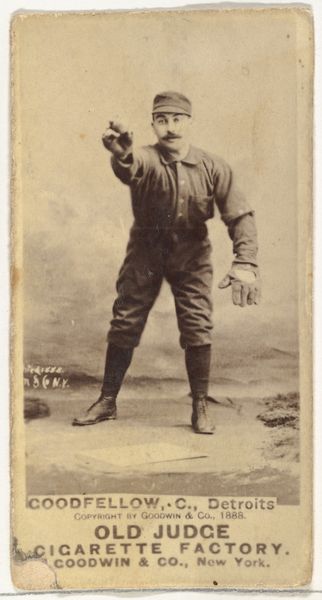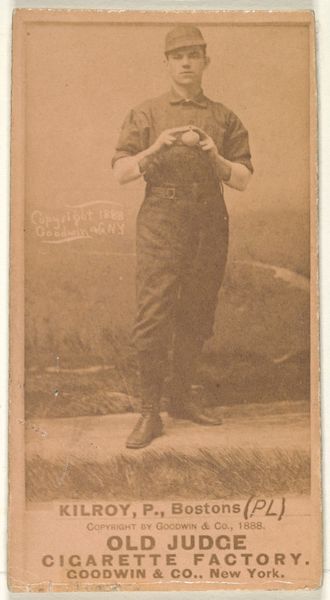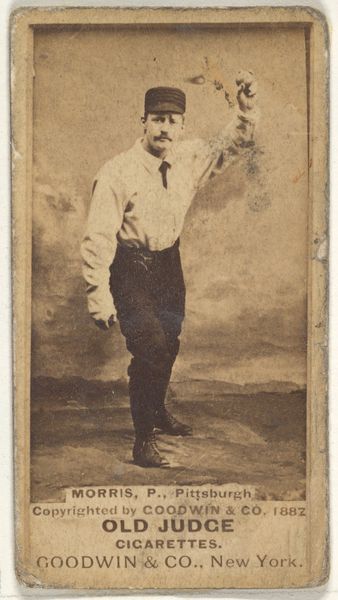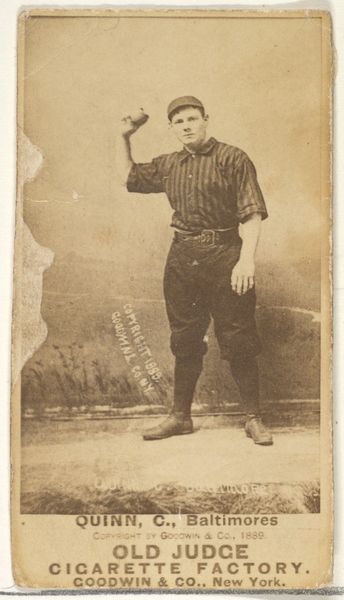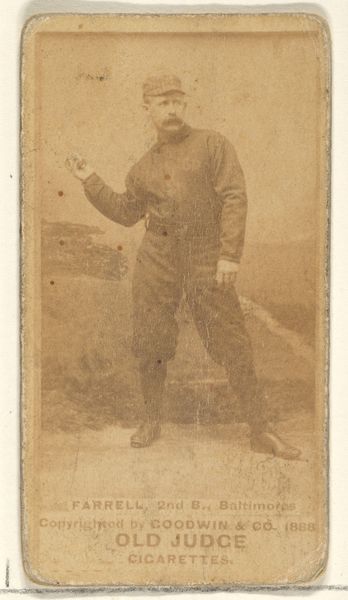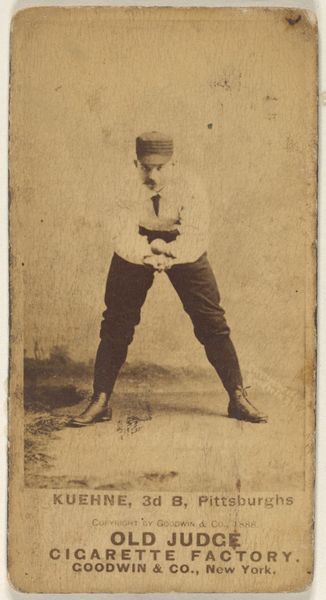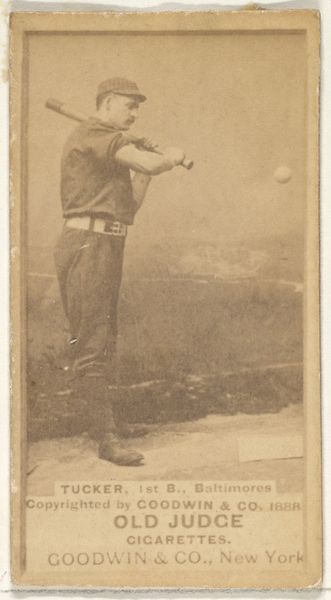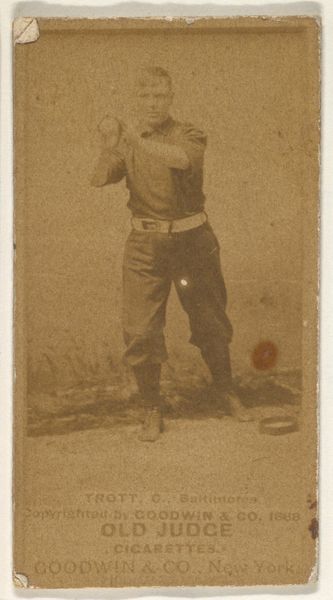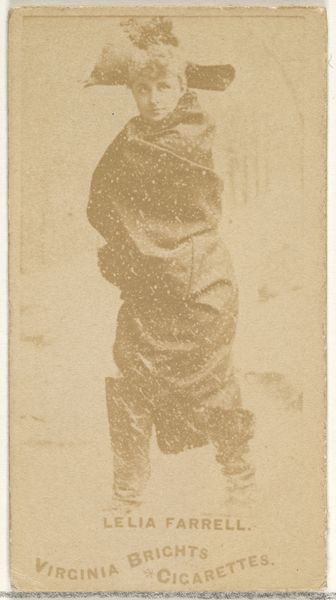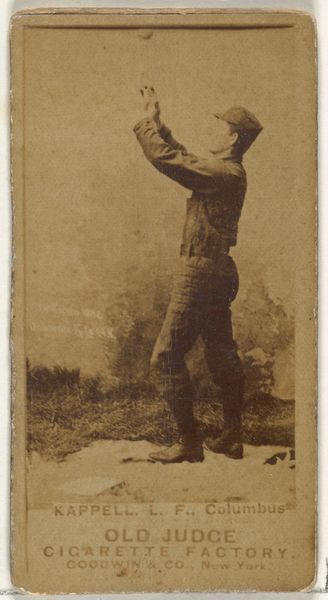
Purcell, Captain, Baltimore Orioles, from the Old Judge series (N172) for Old Judge Cigarettes 1888
0:00
0:00
drawing, print, photography, albumen-print
#
portrait
#
drawing
# print
#
baseball
#
photography
#
coloured pencil
#
men
#
albumen-print
Dimensions: sheet: 2 11/16 x 1 3/8 in. (6.9 x 3.5 cm)
Copyright: Public Domain
Editor: This is an albumen print from 1888 by Goodwin & Company, titled "Purcell, Captain, Baltimore Orioles, from the Old Judge series (N172) for Old Judge Cigarettes." It's striking how this image of a baseball player is simultaneously a portrait and an advertisement. What do you make of the material choices in this piece? Curator: The albumen print, itself a relatively new technology at the time, speaks volumes. Think about the means of production: the photograph taken, then meticulously printed. The insertion of a human worker in the equation shifts our perspective from art, maybe fine art, to industrial practices. It was meant for mass distribution via cigarette packs, essentially inserting baseball and celebrity culture into the everyday habits of consumption. It is amazing to notice this material culture supporting another. What sort of dialogue arises if we approach such object making through labor rather than authorship? Editor: That's fascinating. I hadn't considered the connection to the consumption habits. So, the photograph itself is almost secondary to the act of distribution and the social context it creates? Curator: Precisely. The image becomes less about aesthetic contemplation and more about its function as a promotional item and a collectible embedded in a network of material exchange. Consider also the conditions of photographic production then. These cards represent early forms of advertisement meeting mass culture and sports heroes. It challenges our conceptions about art if we consider it to be deeply rooted within labor histories and market forces. Editor: I never would have thought about it that way! Now I am seeing so many layers beneath the surface of what seemed like a simple image. Curator: The key takeaway here is how focusing on materials and their uses in production offers us the lens to challenge existing frameworks that separate “high art” from practices deeply interwoven within capitalist enterprise. I, also, think about that when looking at art and life around. Editor: I'll definitely remember to consider those aspects of materiality in my future studies.
Comments
No comments
Be the first to comment and join the conversation on the ultimate creative platform.
